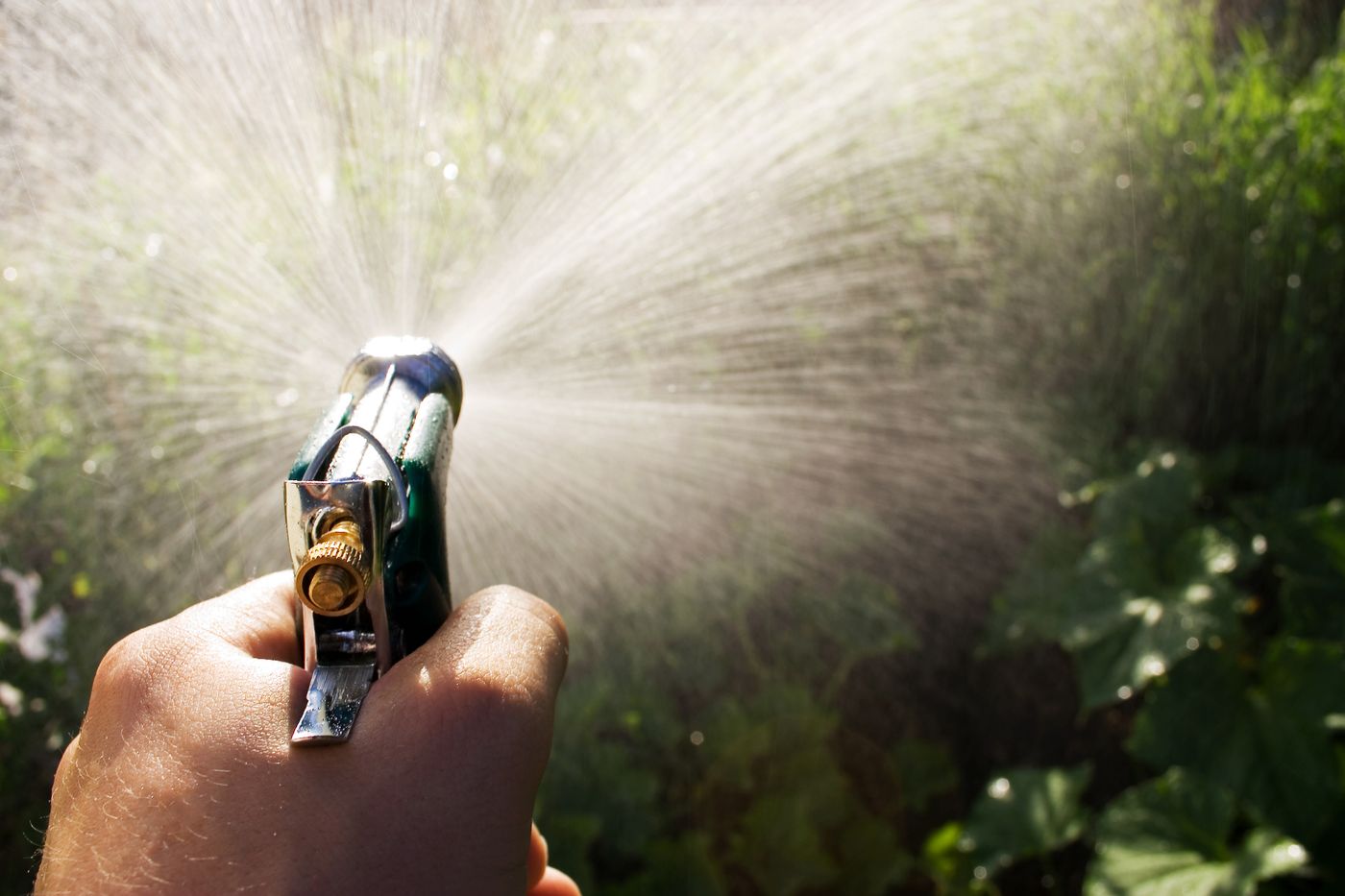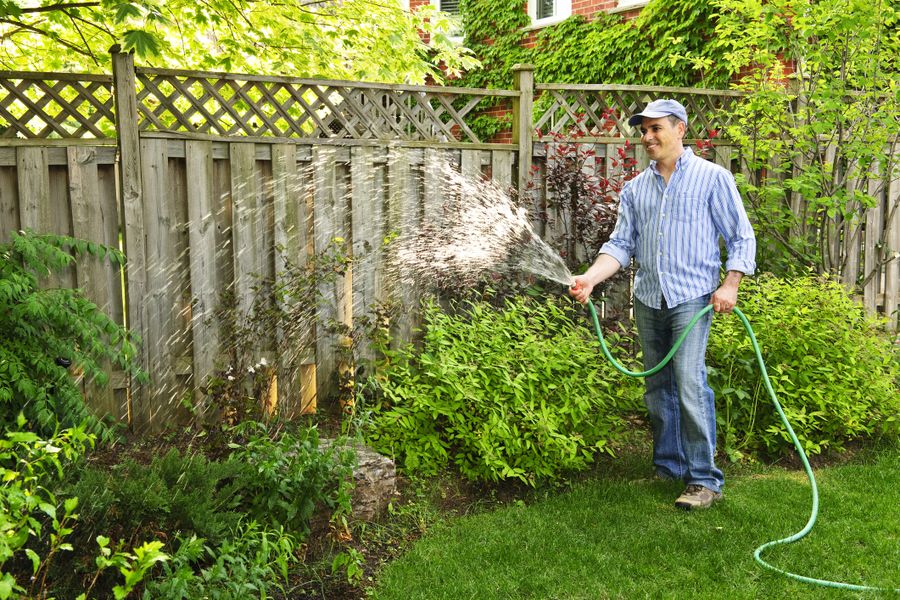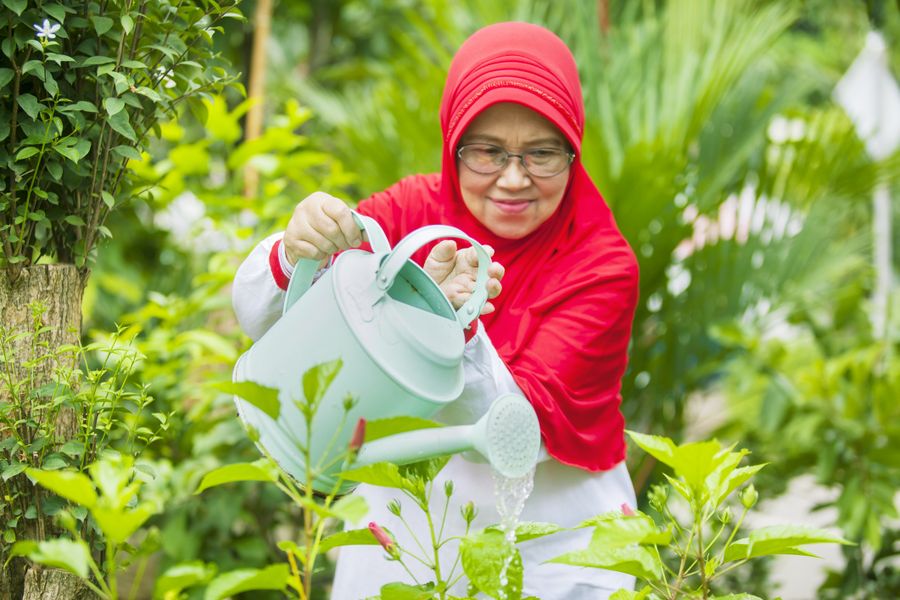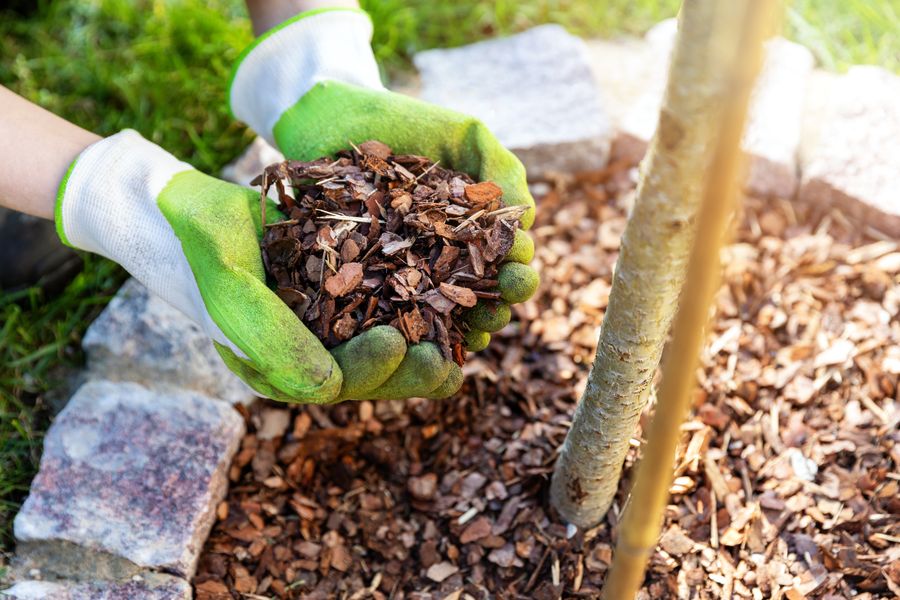Watering
Different plants and garden areas have different watering needs
Each component of the garden – lawns, garden beds, containers, veggie patch, trees and shrubs – all have differing watering needs. The extent of irrigation required will depend on the amount of rain naturally falling in the area.
In areas of high rainfall, an occasional watering during hot dry spells may be all that is needed. In drier climates, a good irrigation system will be required to supply what is not available naturally.
Strategic watering
- Excessive watering can result in valuable nutrients being washed from the soil as well as wasting our most valuable resource.
- Soil type and condition will also influence the amount of additional watering necessary. Clay soils, for instance, retain water more effectively than sandy soils.
- Digging plenty of organic matter into clay soils will help them drain more freely, while helping sandy soils retain moisture more effectively.


Smart watering
Look for Smart Drop Certified on a product website or packaging so you know that the product you are buying is water efficient, durable, fit for purpose and environmentally sustainable. Products certified by Smart Drop have been reviewed by a credible, robust Independent Expert Panel.
Types of watering systems
Drip irrigation
The most efficient way to water is to water roots, not leaves. Drip irrigation systems that deliver water at or below the ground surface are very efficient. Smart Drop Certified has covers a range of efficient, above and below soil irrigation systems. Drip irrigation delivers a controlled trickle of water directly to the roots of the plant and avoids wetting the foliage, helping to control some diseases. Weeds are not encouraged and evaporation of water from the soil is minimised. The slow rate of application means that no water is wasted through run off.
The simplest form of drip or trickle irrigation is the soaker hose, which requires no installation other than being connected to the tap or the end of a hose. Water seeps slowly through its porous surface all along its length. It must be moved about the garden for complete coverage and requires the same timing precautions as sprinklers to avoid over-watering.
More sophisticated, semi-permanent dripper or trickle systems typically use 13 mm diameter polytube as feeder lines into which drippers or emitters are inserted. The drippers may have either a fixed flow rate or may be adjustable according to the water requirements of individual plants. Drippers may also be connected to lengths of flexible 4 mm polytube which is in turn plugged into the feeder lines, enabling plants some distance from the line to be watered effectively.
Drip irrigation requires lower water pressures than sprinklers so a pressure regulator should be installed in the main line just after the filter. If a regulator is not fitted, the water pressure may cause drippers to blow out.
Filters and backflow valves
Both micro spray and dripper systems are vulnerable to clogging from water-borne debris. To avoid repeated blocking, an inline filter should be installed just after the main tap. Some local authorities require a backflow valve to be installed by a plumber before any irrigation system may be installed. This valve prevents water from the irrigation system flowing back into the household supply.
Movable sprinklers
The simplest solution to watering the garden is a hand-held rose attached to the end of a hose. This may be all that is required for the watering needs of a small inner city garden with small beds and a few pot plants.
The next step is to a movable sprinkler attached to a hose and moved about the garden as required. Such sprinklers vary enormously in complexity and price from very simple sprays to complex mechanical ‘butterfly’ units with adjustable spray patterns. Sprinklers like this are easy to forget once switched on, so an inexpensive clockwork timer fitted between the tap and the hose is a worthwhile investment.
This is not an efficient solution for irrigation because there is a higher potential for wind spray and evaporation and for this reason it has been banned under water restrictions in parts of the country. The ideal rate of application is about 12 mm per hour. At higher rates some water will not be absorbed by the soil and will run off to be wasted.
To determine the flow rate of a sprinkler, check the level of water filling straight-sided containers such as cans placed at various points under the spray after 15 minutes.
Fixed sprinklers
Micro irrigation was developed in Israel to make the best use of a limited water supply in an arid climate, not unlike much of Australia. Miniature spray heads or jets are mounted onto rigid risers plugged into a network of black pvc irrigation tubing, known as polytube, as feeder lines, usually 13mm in diameter.
The spray heads are available in a variety of spray patterns and spreads enabling efficient, even coverage only to those areas of the garden requiring watering. Like moveable sprinklers this irrigation is prone to wind spray and high evaporation losses and is not permitted under water restrictions in some parts of Australia.
Timers
Various forms of time controllers can be used to turn watering systems on and off and these vary widely in their complexity and expense. The simplest type is a clockwork timer which is fitted between the tap and the hose line or irrigation system, allowing up to two hours of watering before switching off.
More complex computerised units allow several independent lines to be programmed to turn on and off independently. The units control low voltage electric solenoid valves which open and close each line, and the more sophisticated of these devices allow each line to be operated independently several times daily over a period of a week or more.
A rainfall sensor connected to the timer should be used to cancel the system in periods of high rainfall when additional watering would be unnecessarily wasteful. Regardless of the system it is important to only water in the early morning and at dusk when temperatures are lower and evaporation is less. A digital watering timer can also significantly reduce the amount of water used particularly for sprinkler systems where even a few minutes can use thousands of litres. Many irrigation systems come with controllers to help you do this.
Water Wicking
A wicking bed is a garden bed with a waterproof lining which holds a reservoir of water at the base.
The water is drawn upwards through the soil via natural osmosis or ‘wicking’ through the damp soil below to the drier soil above to help maintain consistent and optimal growing conditions. Wicking beds can be found in all manner of containers and materials so long as it can be waterproofed and doesn’t corrode when in contact with damp soil. Water wicking offers many benefits in the use and management of water including significant reductions in water waste as none is lost to the evaporation effects of wind and sun which happens when beds are watered from above.
As the wicking bed ‘self-waters’ it’s a very popular low maintenance option for many growing situations as the improved water use efficiency means beds only need to be watered periodically by filling the reservoir rather than everyday as is usually the case with other irrigation methods.As the reduced watering process also improves the soil biology it results in healthier and happier plants and crop.
There are many different wicking bed designs to choose from and a little on-line research can provide a wealth of advice on the materials to use and how to build and maintain them. Check out the wicking products certified by Smart Drop. They have a unique recycled plastic cell which allows wicking beds of all manner of shape and size to be constructed easily and economically to ensure that precious water is used effectively, and your garden will flourish no matter how harsh the growing conditions.



